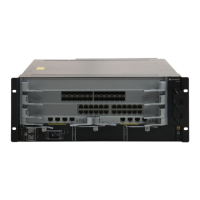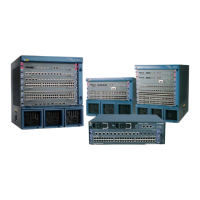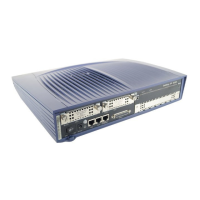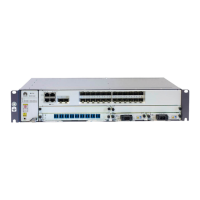l Configure the routing protocol on the UPE so that reachable routes are created between
the UPE and the NPEs.
l Configure the basic MPLS functions on the UPE.
l Configure MPLS LDP on the UPE.
2. Configure the VPLS.
l Configure the mVSI and service VSI on the UPE.
– The mVSI transmits the mVRRP packets and peer BFD packets between the NPEs.
– The service VSIs exchange service packets between the NPE and users.
l Bind the service VSI to the mVSI on the UPE.
When the switchover occurs between the NPEs, the mVSI on the UPE receives a
gratuitous ARP packet. The UPE clears the MAC addresses of all the bound service
VSIs according to the binding relation between the mVSI and the service VSIs.
Data Preparation
To complete the configuration, you need the following data:
l Numbers and IP addresses of related interfaces and IS-IS process ID
l LSR ID, tunnel number, tunnel ID, and LDP peer name
l VSI name, VC ID, and tunnel policy
Procedure
Step 1 Configure routes.
After the configuration, reachable routes are available between the UPE and NPEs.
The configuration details are not mentioned here.
Step 2 Configure MPLS functions.
NOTE
In this example, the MPLS TE tunnel is used between the UPE and the NPEs.
1. Enable MPLS, MPLS TE, MPLS RSVP-TE, and MPLS CSPF.
On the nodes along the MPLS TE tunnel, enable MPLS, MPLS TE, and MPLS RSVP-TE
both in the system view and the interface view. On the ingress node of the tunnel, enable
MPLS CSPF in the system view. Set the address of Loopback1 to the LSR ID.
# Configure the UPE.
[UPE] mpls lsr-id 1.1.1.1
[UPE] mpls
[UPE-mpls] mpls te
[UPE-mpls] mpls rsvp-te
[UPE-mpls] mpls te cspf
[UPE-mpls] quit
[UPE] interface vlanif 100
[UPE-Vlanif100] mpls
[UPE-Vlanif100] mpls te
[UPE-Vlanif100] mpls rsvp-te
[UPE-Vlanif100] quit
[UPE] interface vlanif 200
[UPE-Vlanif200] mpls
[UPE-Vlanif200] mpls te
Quidway S7700 Smart Routing Switch
Configuration Guide - VPN 8 VPLS Convergence Configuration
Issue 01 (2011-07-15) Huawei Proprietary and Confidential
Copyright © Huawei Technologies Co., Ltd.
813

